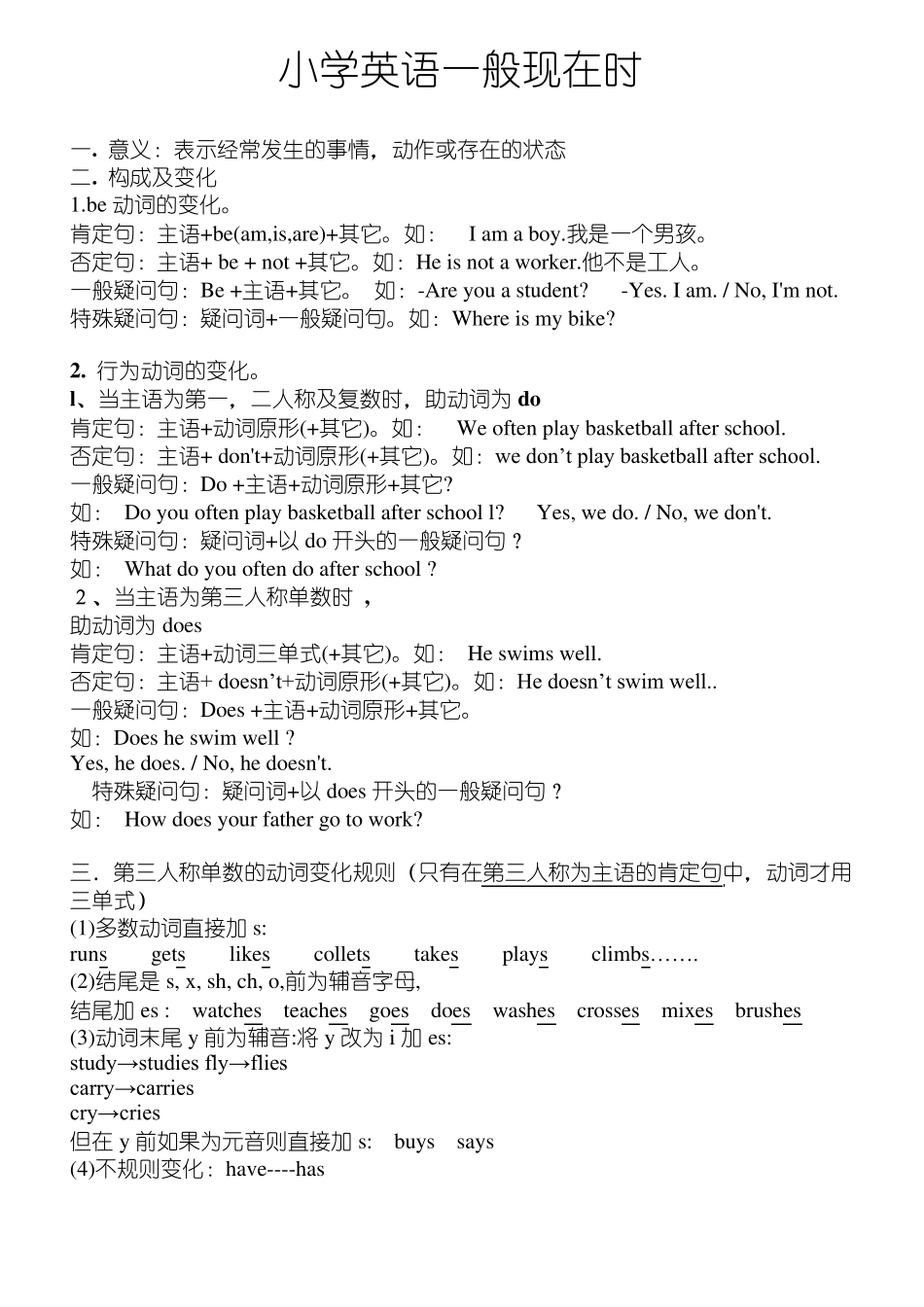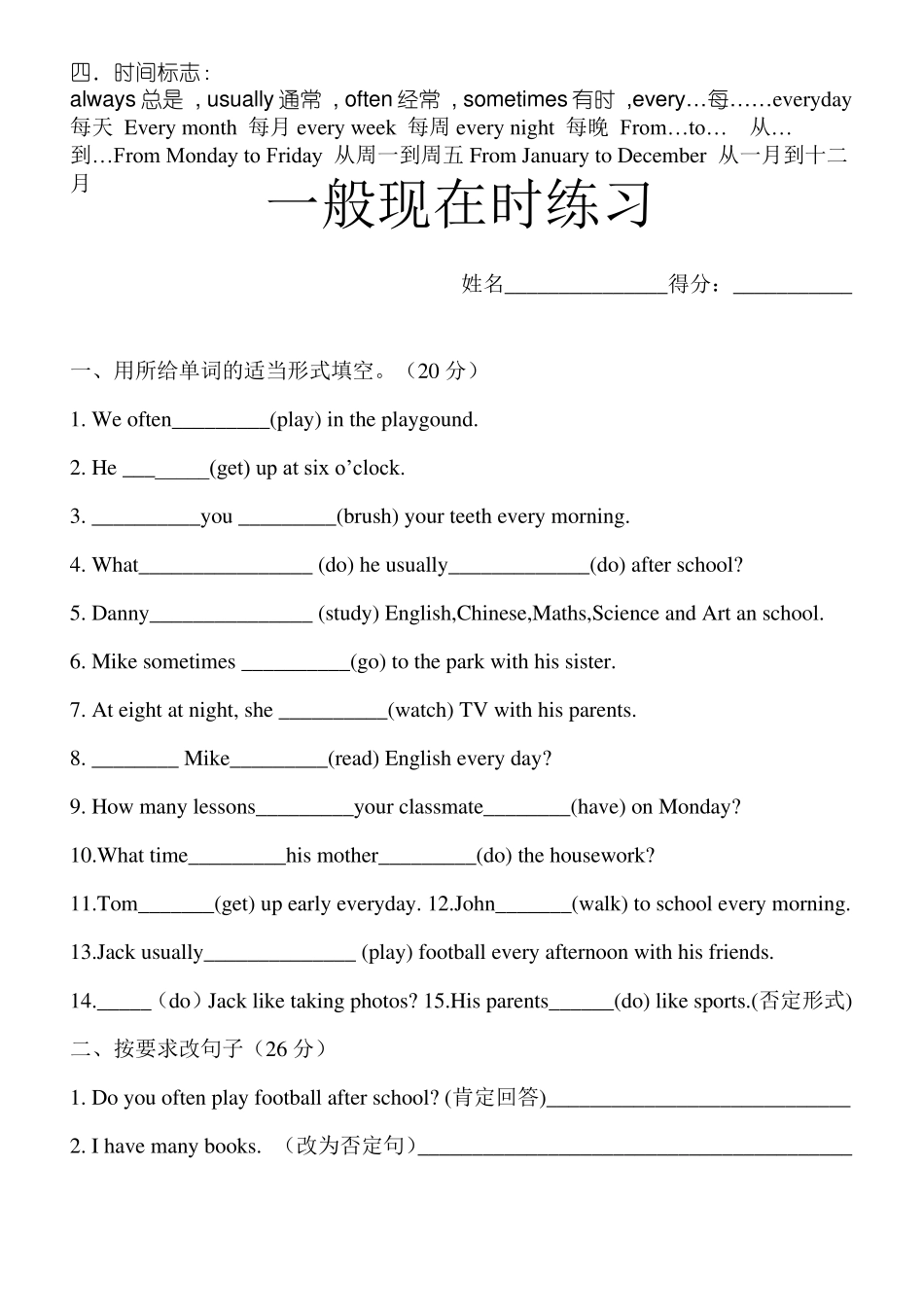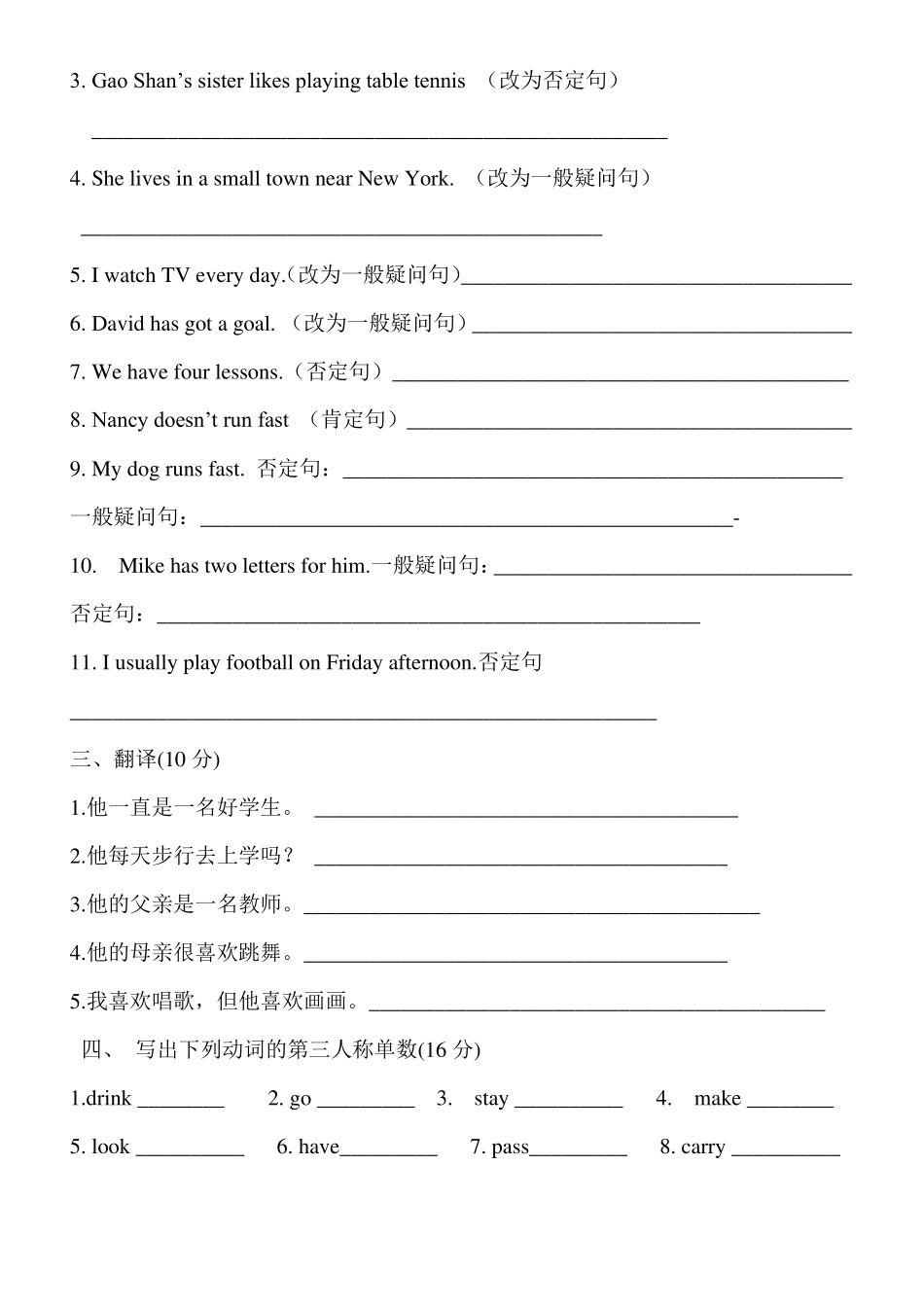小学英语一般现在时 一. 意义:表示经常发生的事情,动作或存在的状态 二. 构成及变化 1.be 动词的变化。 肯定句:主语+be(am,is,are)+其它。如: I am a boy.我是一个男孩。 否定句:主语+ be + not +其它。如:He is not a worker.他不是工人。 一般疑问句:Be +主语+其它。 如:-Are you a student? -Yes. I am. / No, I'm not. 特殊疑问句:疑问词+一般疑问句。如:Where is my bike? 2. 行为动词的变化。 l、当主语为第一,二人称及复数时,助动词为do 肯定句:主语+动词原形(+其它)。如: We often play basketball after school. 否定句:主语+ don't+动词原形(+其它)。如:we don’t play basketball after school. 一般疑问句:Do +主语+动词原形+其它? 如: Do you often play basketball after school l? Yes, we do. / No, we don't. 特殊疑问句:疑问词+以 do 开头的一般疑问句? 如: What do you often do after school ? 2、当主语为第三人称单数时 , 助动词为does 肯定句:主语+动词三单式(+其它)。如: He swims well. 否定句:主语+ doesn’t+动词原形(+其它)。如:He doesn’t swim well.. 一般疑问句:Does +主语+动词原形+其它。 如:Does he swim well ? Yes, he does. / No, he doesn't. 特殊疑问句:疑问词+以 does 开头的一般疑问句? 如: How does your father go to work? 三.第三人称单数的动词变化规则(只有在第三人称为主语的肯定句中,动词才用三单式) (1)多数动词直接加 s: runs gets likes collets takes plays climbs……. (2)结尾是s, x, sh, ch, o,前为辅音字母, 结尾加 es : watches teaches goes does washes crosses mixes brushes (3)动词末尾 y前为辅音:将 y改为i 加 es: study→studies fly→flies carry→carries cry→cries 但在y前如果为元音则直接加 s: buys says (4)不规则变化:have----has 四.时间标志: always 总是 , usually通常 , often 经常 , sometimes 有时 ,every… 每… … everyday 每天 Every month 每月every week 每周every night 每晚 From…to… 从…到…From Monday to Friday 从周一到周五From January to December 从一月到十二月 一般现在时练习 姓名______...


